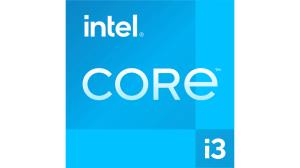Cart
- Cart Empty!
- ACER
- ALLIED TELESIS
- AMD
- ANTEC
- AOC
- APC/ MGE
- ASUSTEK COMPUTER
- ATI TECHNOLOGIES
- AVM
- AXIS COMMUNICATIONS
- BELKIN CORPORATION
- BENQ
- BROTHER
- CANON
- CASE LOGIC
- COREL
- D-LINK
- DATALOGIC
- DELL
- DIGITUS
- EATON CORPORATION
- EMERSON NETWORK POWER
- EPSON
- ERGOTRON
- FUJITSU TECHNOLOGY SOLUTIONS
- GIGABYTE TECH
- HEWLETT PACKARD
- INTEL
- IRIS
- KENSINGTON
- KINGSTON
- KODAK
- LENOVO
- LEXMARK
- LOGITECH
- MATROX
- McAfee
- MICROSOFT
- NETGEAR, INC.
- NEWSTAR
- NOKIA
- ORIGIN STORAGE
- PHILIPS
- PLANET
- PORT DESIGNS
- RAIDSONIC
- SAMSUNG
- SAPPHIRE INTERNATIONAL INC.
- SEAGATE & MAXTOR
- SIEMENS
- SONY
- SYMANTEC
- TARGUS
- TP-LINK TECHNOLOGIES
- V7 - VIDEO SEVEN
- WESTERN DIGITAL
- XEROX & VISIONEER
- ZYXEL
- More Brands
Every effort has been made to ensure the accuracy of all information contained herein. e-nitiative shall not be liable for any changes resulting in wrong product description, tax code and/or price. The shown information (specifications, prices, taxes) should be considered as an indication and can be changed at any moment and without any prior notice.
Company details
Laska Computers
Deltazijde 10b
1261ZM BLARICUM
The Netherlands
Email Us
info@laska.nl
Phone
035-5243553
VAT No
NL -001504242B88
KVK No
32052711




Product Details
Introduction
Intel® Gaussian & Neural Accelerator
Intel® Gaussian & Neural Accelerator (GNA) is an ultra-low power accelerator block designed to run audio and speed-centric AI workloads. Intel® GNA is designed to run audio based neural networks at ultra-low power, while simultaneously relieving the CPU of this workload.
Intel® Deep Learning Boost (Intel® DL Boost)
A new set of embedded processor technologies designed to accelerate AI deep learning use cases. It extends Intel AVX-512 with a new Vector Neural Network Instruction (VNNI) that significantly increases deep learning inference performance over previous generations.
Intel® Optane™ Memory Supported
Intel® Optane™ memory is a revolutionary new class of non-volatile memory that sits in between system memory and storage to accelerate system performance and responsiveness. When combined with the Intel® Rapid Storage Technology Driver, it seamlessly manages multiple tiers of storage while presenting one virtual drive to the OS, ensuring that data frequently used resides on the fastest tier of storage. Intel® Optane™ memory requires specific hardware and software configuration.
Intel® Speed Shift Technology
Intel® Speed Shift Technology uses hardware-controlled P-states to deliver dramatically quicker responsiveness with single-threaded, transient (short duration) workloads, such as web browsing, by allowing the processor to more quickly select its best operating frequency and voltage for optimal performance and power efficiency.
Intel® Turbo Boost Technology
Intel® Turbo Boost Technology dynamically increases the processor's frequency as needed by taking advantage of thermal and power headroom to give you a burst of speed when you need it, and increased energy efficiency when you don’t.
Intel® Hyper-Threading Technology
Intel® Hyper-Threading Technology (Intel® HT Technology) delivers two processing threads per physical core. Highly threaded applications can get more work done in parallel, completing tasks sooner.
Intel® Virtualization Technology (VT-x)
Intel® Virtualization Technology (VT-x) allows one hardware platform to function as multiple “virtual” platforms. It offers improved manageability by limiting downtime and maintaining productivity by isolating computing activities into separate partitions.
Intel® Virtualization Technology for Directed I/O (VT-d)
Intel® Virtualization Technology for Directed I/O (VT-d) continues from the existing support for IA-32 (VT-x) and Itanium® processor (VT-i) virtualization adding new support for I/O-device virtualization. Intel VT-d can help end users improve security and reliability of the systems and also improve performance of I/O devices in virtualized environments.
Intel® VT-x with Extended Page Tables (EPT)
Intel® VT-x with Extended Page Tables (EPT), also known as Second Level Address Translation (SLAT), provides acceleration for memory intensive virtualized applications. Extended Page Tables in Intel® Virtualization Technology platforms reduces the memory and power overhead costs and increases battery life through hardware optimization of page table management.
Intel® 64
Intel® 64 architecture delivers 64-bit computing on server, workstation, desktop and mobile platforms when combined with supporting software. Intel 64 architecture improves performance by allowing systems to address more than 4 GB of both virtual and physical memory.
Idle States
Idle States (C-states) are used to save power when the processor is idle. C0 is the operational state, meaning that the CPU is doing useful work. C1 is the first idle state, C2 the second, and so on, where more power saving actions are taken for numerically higher C-states.
Enhanced Intel SpeedStep® Technology
Enhanced Intel SpeedStep® Technology is an advanced means of enabling high performance while meeting the power-conservation needs of mobile systems. Conventional Intel SpeedStep® Technology switches both voltage and frequency in tandem between high and low levels in response to processor load. Enhanced Intel SpeedStep® Technology builds upon that architecture using design strategies such as Separation between Voltage and Frequency Changes, and Clock Partitioning and Recovery.
Thermal Monitoring Technologies
Thermal Monitoring Technologies protect the processor package and the system from thermal failure through several thermal management features. An on-die Digital Thermal Sensor (DTS) detects the core's temperature, and the thermal management features reduce package power consumption and thereby temperature when required in order to remain within normal operating limits.
Intel® Volume Management Device (VMD)
Intel® Volume Management Device (VMD) provides a common, robust method of hot plug and LED management for NVMe-based solid state drives.
Intel® AES New Instructions
Intel® AES New Instructions (Intel® AES-NI) are a set of instructions that enable fast and secure data encryption and decryption. AES-NI are valuable for a wide range of cryptographic applications, for example: applications that perform bulk encryption/decryption, authentication, random number generation, and authenticated encryption.
Secure Key
Intel® Secure Key consists of a digital random number generator that creates truly random numbers to strengthen encryption algorithms.
Execute Disable Bit
Execute Disable Bit is a hardware-based security feature that can reduce exposure to viruses and malicious-code attacks and prevent harmful software from executing and propagating on the server or network.
Intel® Boot Guard
Intel® Device Protection Technology with Boot Guard helps protect the system’s pre-OS environment from viruses and malicious software attacks.
Mode-based Execute Control (MBE)
Mode-based Execute Control can more reliably verify and enforce the integrity of kernel level code.
Intel® Control-Flow Enforcement Technology
CET - Intel Control-flow Enforcement Technology (CET) helps protect against the misuse of legitimate code snippets through return-oriented programming (ROP) control-flow hijacking attacks.
Processor
Processor manufacturer
Intel
Processor generation
12th gen Intel® Core™ i3
Processor model
i3-12100
Processor family
Intel® Core™ i3
Processor cores
4
Processor socket
LGA 1700
Processor threads
8
Processor operating modes
64-bit
Performance cores
4
Processor boost frequency
4.3 GHz
Performance-core boost frequency
4.3 GHz
Performance-core base frequency
3.3 GHz
Processor cache
12 MB
Processor cache type
Smart Cache
Box
Y
Maximum turbo power
89 W
Processor base power
60 W
Bus type
DMI4
Maximum number of DMI lanes
8
Memory bandwidth supported by processor (max)
76.8 GB/s
Processor codename
Alder Lake
Memory
Maximum internal memory supported by processor
128 GB
Memory types supported by processor
DDR4-SDRAM,DDR5-SDRAM
Memory channels
Dual-channel
Memory bandwidth (max)
76.8 GB/s
Graphics
On-board graphics card
Y
Discrete graphics card
N
On-board graphics card model
Intel UHD Graphics 730
On-board graphics card outputs supported
Embedded DisplayPort (eDP) 1.4b,DisplayPort 1.4a,HDMI 2.1
On-board graphics card base frequency
300 MHz
On-board graphics card dynamic frequency (max)
1400 MHz
Number of displays supported (on-board graphics)
4
On-board graphics card DirectX version
12.0
On-board graphics card OpenGL version
4.5
On-board graphics card maximum resolution (DisplayPort)
7680 x 4320 pixels
On-board graphics card maximum resolution (eDP - Integrated Flat Panel)
5120 x 3200 pixels
On-board graphics card maximum resolution (HDMI)
4096 x 2160 pixels
On-board graphics card refresh rate at maximum resolution (DisplayPort)
60 Hz
On-board graphics card refresh rate at maximum resolution (eDP - Integrated Flat Panel)
120 Hz
On-board graphics card refresh rate at maximum resolution (HDMI)
60 Hz
On-board graphics card ID
0x4692
Discrete graphics card model
Not available
Number of execution units
24
Multi-Format Codec Engines
1
Features
Execute Disable Bit
Y
Idle States
Y
Thermal Monitoring Technologies
Y
Market segment
Desktop
Use conditions
PC/Client/Tablet
Maximum number of PCI Express lanes
20
PCI Express slots version
5.0,4.0
PCI Express configurations
1x16+1x4,2x8+1x4
Supported instruction sets
SSE4.1,SSE4.2,AVX 2.0
Scalability
1S
CPU configuration (max)
1
Embedded options available
N
Direct Media Interface (DMI) Revision
4.0
Harmonized System (HS) code
8542310001
Export Control Classification Number (ECCN)
5A992CN3
Commodity Classification Automated Tracking System (CCATS)
G167599
Processor special features
Intel® Hyper Threading Technology (Intel® HT Technology)
Y
Intel® Turbo Boost Technology
2.0
Intel® Quick Sync Video Technology
Y
Intel® Clear Video HD Technology (Intel® CVT HD)
Y
Intel® AES New Instructions (Intel® AES-NI)
Y
Enhanced Intel SpeedStep Technology
Y
Intel® Speed Shift Technology
Y
Intel® Gaussian & Neural Accelerator (Intel® GNA) 3.0
Y
Intel® Control-flow Enforcement Technology (CET)
Y
Intel® Thread Director
N
Intel VT-x with Extended Page Tables (EPT)
Y
Intel® Secure Key
Y
Intel® OS Guard
Y
Intel 64
Y
Intel Virtualization Technology (VT-x)
Y
Intel Virtualization Technology for Directed I/O (VT-d)
Y
Intel Turbo Boost Max Technology 3.0
N
Intel® Optane™ Memory Ready
Y
Intel® Boot Guard
Y
Intel® Deep Learning Boost (Intel® DL Boost)
Y
Intel® Volume Management Device (VMD)
Y
Mode-based Execute Control (MBE)
Y
Operational conditions
Tjunction
100 °C
Technical details
OpenCL version
2.1
Launch date
Q1'22
Status
Launched
Packaging data
Package type
Retail box
Weight & dimensions
Processor package size
45 x 37.5 mm
Other features
Maximum internal memory
128 GB
Graphics output
eDP 1.4b, DP 1.4a, HDMI 2.1








